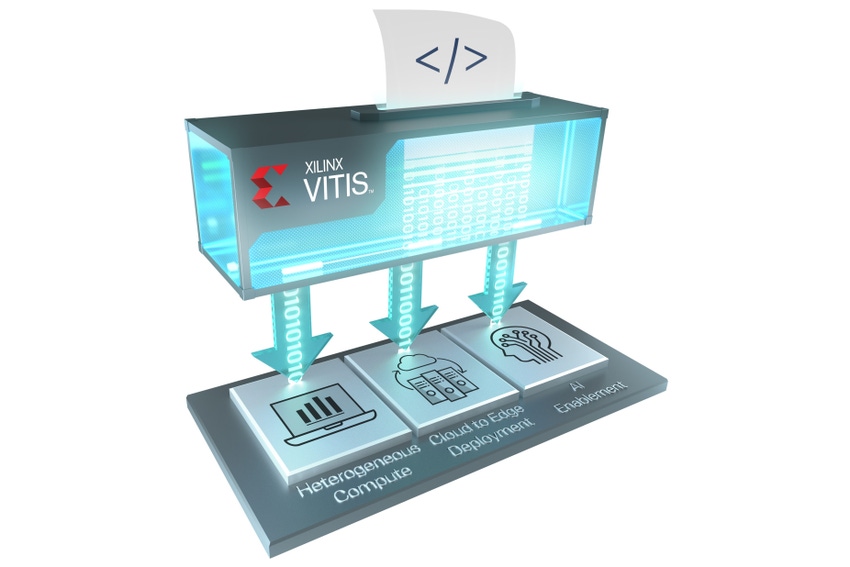November 14, 2019

As it looks to transform from a silicon designer into a platform company
by Max Smolaks 14 November 2019
Chip designer Xilinx, mostly known for its field programmable gate array (FPGA) products, has launched Vitis - a free, all-in-one software development environment.
The company hopes that Vitis will make it much easier to develop software for FPGAs, which are notoriously complex and usually require advanced hardware design skills to be programmed for specific use cases.
Most of the Vitis code has been released on GitHub under an open source license, including eight software libraries that simplify application development in fields like security, data compression and quantitative finance.
The package also includes compilers, analyzers, debuggers, as well as examples of applications, tutorials and documentation.
One thing it doesn’t include, for now, is the AI component – Vitis AI is expected to be added in a few weeks, with full support for popular machine learning frameworks like TensorFlow, Caffe and PiTorch, and a section of pre-built models.
Update: Vitis AI was launched at the Xilinx Developer Forum China on December 3rd. It is available for immediate download, free of charge.
“Pretty much every segment we are addressing is either looking at AI or already deploying AI,” said Ramine Roane, vice president of product marketing for software, AI and IP solutions at Xilinx.
“What we needed was not just a software development platform where you write in C++ and you have optimized libraries, but also an AI environment where AI scientists can optimize their neural networks - in TensorFlow, for example - for inference, low latency, high performance, low power, and then provide an API to the software developer, so they can use that neural network just like a function call. And that’s exactly what we are doing with Vitis and Vitis AI.”
The launch was announced at the Xilinx Developer Forum in the Hague, the Netherlands, earlier this week.
Going mainstream
Xilinx specializes in programmable logic devices and is credited with the invention of the first FPGA back in 1985. FPGAs have since become a large market, being employed for tasks where using conventional CPUs is impractical.
Unlike most silicon chips, which ship with all of the functionality pre-programmed and fixed in place, FPGAs can be reprogrammed to desired application or functionality requirements after manufacturing – no matter how exotic the use case.
Today, applications for FPGAs range from telecommunications to medical imaging, hardware emulation, and of course, AI workloads. Xilinx chips have travelled to Mars aboard the Curiosity rover and were used by CERN to discover the Higgs boson. AWS, IBM and Microsoft all offer Xilinx FPGAs as part of their cloud services.
Vitis aims to make FPGA technology a lot more mainstream, opening the development process to a wide range of developers and data scientists. According to Roane, this is one of the most important strategic initiatives ever undertaken by the company, and it has been five years in the making.
“It allows developers to deploy their applications from edge or end-point SoCs all the way to data centers and cloud applications,” he said.
According to Xilinx, AI innovation currently outpaces silicon design cycles, and using FPGAs is one way to offset the shortfall in performance.
The Vitis software includes Device Support Archive (DSA) files designed specifically to program a Deep Neural Network Processing Unit (DPU) into a supported FPGA to help shrink compile times for AI applications.
About the Author(s)
You May Also Like
.jpg?width=700&auto=webp&quality=80&disable=upscale)
.jpg?width=700&auto=webp&quality=80&disable=upscale)
.jpg?width=700&auto=webp&quality=80&disable=upscale)




